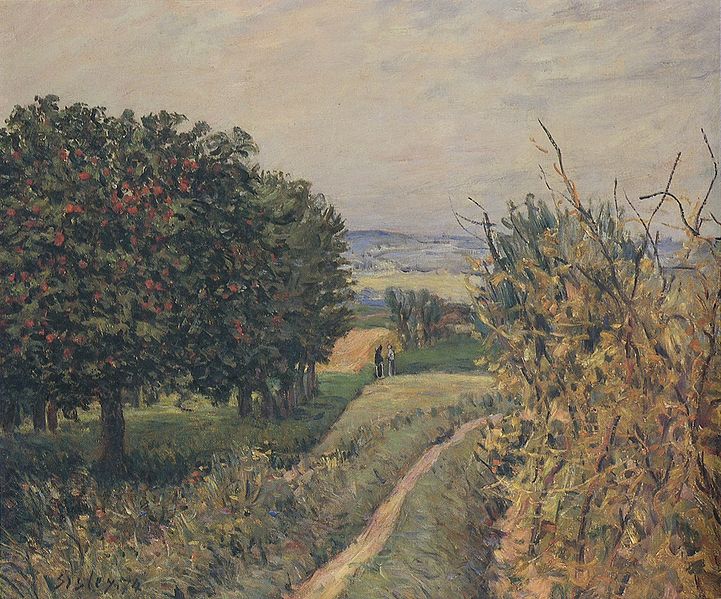 The compatibility of traditional Japanese and Western Landscape I have discussed before the compatibility of Chinese and baroque landscape. The controlled variation in focus and colour is common to Eastern and Western forms - the most important parts of the composition in sharper focus and, if it is not monochrome, most intensely coloured. Traditional Japanese landscape is worthy of study too. If anything the variation is even more marked. So much so that I would suggest that any budding landscape artist study these as part of their training, even if eventually they wish to concentrate on the Western form. One of the hardest things to do when painting from nature is to decide which parts are blurred and which in focus so that the end result is a coherent, unified impression. I feel that study of these Eastern forms would help develop this faculty.
The compatibility of traditional Japanese and Western Landscape I have discussed before the compatibility of Chinese and baroque landscape. The controlled variation in focus and colour is common to Eastern and Western forms - the most important parts of the composition in sharper focus and, if it is not monochrome, most intensely coloured. Traditional Japanese landscape is worthy of study too. If anything the variation is even more marked. So much so that I would suggest that any budding landscape artist study these as part of their training, even if eventually they wish to concentrate on the Western form. One of the hardest things to do when painting from nature is to decide which parts are blurred and which in focus so that the end result is a coherent, unified impression. I feel that study of these Eastern forms would help develop this faculty.
This is not a new idea. The landscape painters of the 19th century, such as the Impressionists and others such as the great John Singer Sargent studied Japanese art (especially woodcut prints) and their compositional style was affected by it. If we look at the painting at the bottom by Alfred Sisley, (who came from and English family, but lived in France) example, the hanging boughs that frame the composition and the indication of branches and foliage in the very near foreground is a development in the 19th century that corresponds to the Eastern style of composition.
Other articles describing the principles of baroque landscape here.







